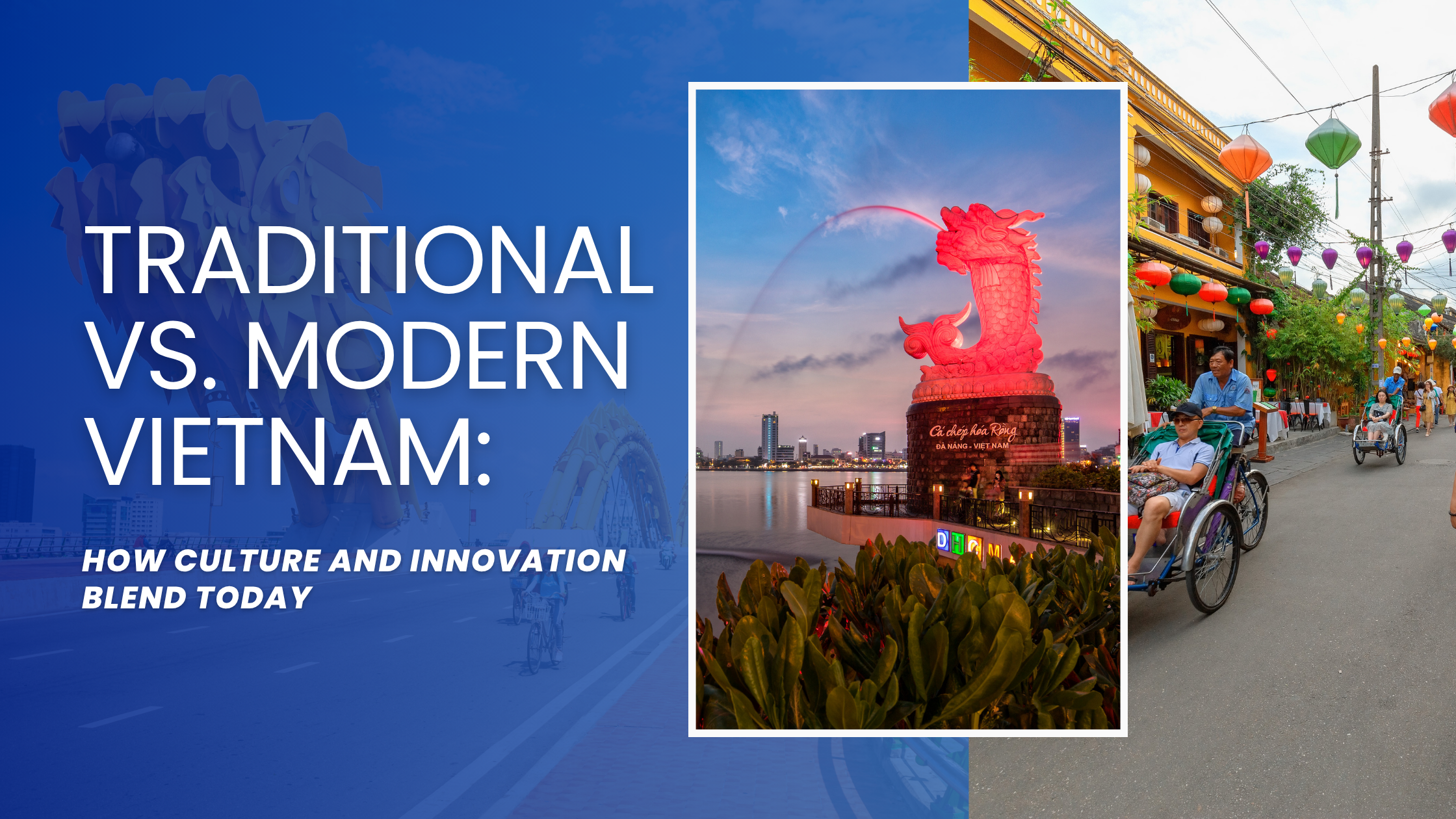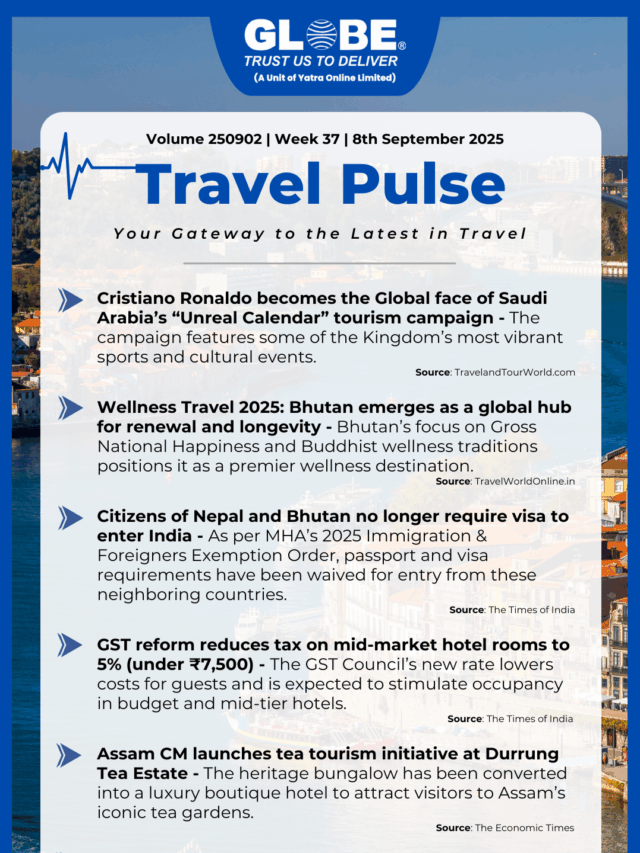Introduction
Vietnam is a land of contrasts. On one hand, it is deeply rooted in ancient traditions—Confucian values, Buddhist temples, water puppet shows, and rice farming. On the other, it is a rapidly modernizing country, with skyscrapers in Ho Chi Minh City, tech startups in Hanoi, and a booming digital economy.
This coexistence of old and new is what makes Vietnam fascinating. Travelers often find themselves walking from centuries-old pagodas to chic rooftop bars within the same day. Locals, too, balance tradition with progress—honoring ancestors while embracing smartphones, K-pop, and e-commerce.
This blog explores how Vietnam harmonizes tradition and modernity across different aspects of life.
Vietnamese Culture: Rooted in Tradition
Vietnam’s identity is deeply shaped by its history, religion, and philosophy.
Confucianism and Family Values
Confucian principles still influence society, especially respect for elders, filial piety, and community spirit. Family gatherings, ancestor worship, and collective decision-making remain central in Vietnamese life.
Festivals and Traditions
Tet (Lunar New Year): The biggest celebration, centered on family reunions, ancestor offerings, and lucky customs.
Mid-Autumn Festival: Known for mooncakes and lanterns, especially loved by children.
Village Festivals: Traditional games, lion dances, and rituals keep community bonds alive.
Daily Traditions
Offering incense at home altars.
Morning exercises by Hoan Kiem Lake in Hanoi.
Street markets where bargaining is part of culture.
Key Insight: These traditions remain strong even as Vietnam urbanizes, showing the resilience of cultural roots.
Modern Vietnam: Cities of the Future
Vietnam is one of Asia’s fastest-growing economies. Its cities reflect this transformation.
Ho Chi Minh City (Saigon)
Skyscrapers like Landmark 81 redefine the skyline.
Thriving startup scene in fintech, e-commerce, and AI.
Luxury malls, rooftop lounges, and international cuisine.
Hanoi
Balances tradition (Old Quarter, temples) with modernization (business districts, metro system).
Hub for education and innovation, with many tech incubators.
Da Nang
Rising as a smart city with modern infrastructure.
Known for its Dragon Bridge and coastal development.
Key Insight: Vietnam’s urban hubs symbolize ambition and global integration, yet they often sit side by side with centuries-old heritage sites.
The Blending of Tradition and Modernity in Daily Life
Food Culture
Traditional: Pho, banh mi, street vendors, wet markets.
Modern: Fusion restaurants, coffee chains, food delivery apps.
Vietnamese cuisine stays true to heritage but adapts to modern lifestyles.
Fashion
Traditional: The iconic ao dai (long dress) still worn during festivals, weddings, and school uniforms.
Modern: Youth embrace streetwear, global fashion brands, and local designers blending old motifs with new trends.
Transportation
Traditional: Bicycles and cyclos (still seen in smaller towns).
Modern: Motorbikes dominate, but electric vehicles, ride-hailing apps, and metro lines are transforming mobility.
Spiritual Life
Traditional: Pagodas, ancestor altars, Buddhist rituals.
Modern: Younger generations may not practice daily rituals but often return to traditions during major holidays.
Key Insight: Instead of abandoning tradition, Vietnam adapts it to modern contexts.
Rural vs. Urban Vietnam
Rural Life
Farming remains central, especially rice cultivation.
Villages maintain communal activities, traditional crafts, and slower lifestyles.
Cultural preservation is stronger in rural areas.
Urban Life
Fast-paced, technology-driven, and globally connected.
Young professionals embrace English, international brands, and modern careers.
Rural-to-urban migration creates cultural blending.
Key Insight: Urbanization is reshaping Vietnam, but rural areas still serve as the cultural backbone.
Technology and Youth Culture
Vietnam’s youth are the drivers of modernization.
Digital Natives: Most young people are fluent in technology, social media, and e-commerce.
Startups & Innovation: Vietnam is a rising star in Southeast Asia’s startup ecosystem.
Pop Culture: K-pop, Western music, and local rap shape youth identity.
Education: Focus on STEM and English, preparing a globally competitive workforce.
Key Insight: While tech-savvy, young Vietnamese still participate in traditional family rituals and festivals, showing cultural continuity.
Tourism: Experiencing Both Worlds
Visitors to Vietnam witness tradition and modernity in harmony.
Traditional Attractions:
Ancient towns like Hoi An.
Hue’s Imperial Citadel.
Rural homestays in Sapa or Mekong Delta.
Modern Attractions:
Rooftop bars in Ho Chi Minh City.
Theme parks like Sun World Ba Na Hills.
Luxury beach resorts in Da Nang and Phu Quoc.
Tip for Travelers: Combine city exploration with rural experiences to see Vietnam’s full spectrum.
Challenges in Balancing Tradition and Modernity
Cultural Preservation: Rapid urbanization risks erasing old neighborhoods and crafts.
Environmental Concerns: Industrialization brings pollution and waste management issues.
Generational Divide: Elders emphasize tradition, while youth embrace global trends.
Tourism Pressure: Over-commercialization can dilute authenticity.
Solution: Sustainable development, cultural education, and community-based tourism can help maintain balance.
The Future of Vietnam: Tradition in a Modern World
Vietnam’s trajectory is clear—it will continue to modernize, urbanize, and globalize. But unlike some countries that lose cultural identity in the process, Vietnam is actively weaving tradition into modernization.
Modern ao dai designs are worn on runways.
Ancient festivals are celebrated with digital promotions.
Smart cities integrate heritage zones into planning.
Key Takeaway: Vietnam’s future is not about choosing between tradition and modernity—it’s about harmonizing both to create a unique identity.
Conclusion
Vietnam is a living example of how tradition and modernity can coexist. From ancestor worship in rural homes to tech startups in urban centers, the country balances its past with its future.
For visitors, this blend makes Vietnam captivating—you can drink coffee in a centuries-old Hanoi café in the morning, ride a bullet train or metro in the afternoon, and enjoy live music at a modern bar at night.
For locals, it is a daily negotiation—how to honor cultural roots while seizing modern opportunities.
In the end, Vietnam’s story is one of resilience and adaptation. Its traditions ground it, while its modern spirit propels it forward. This balance is not just Vietnam’s strength—it is its soul.





